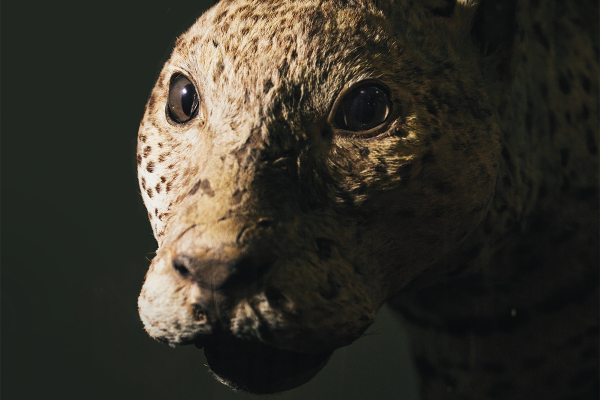Callout: This column is supported by DPAG, but they have no influence on the reviews
Every week, we send two writers to an art exhibit in Ōtepoti Dunedin. One of them will choose a specific piece, and describe it to the other without them looking. They’ll try to figure out what the piece actually is before diving into their thoughts on the entire exhibition. You can’t ascribe any one meaning to any one piece of art, so this functions a bit like a game of artistic telephone. Let’s dive in.
This Week: Otago Museum’s Animal Attic
Subtitle: Taxidermy? More like Taxiderpy! Ha!
Fox: We’re looking at something… unsettling. Something wrong. Something that wants to be wild, and something that represents a piece of a bygone era. Lots of pieces, actually.
Molly: Maybe it's some sort of shredded art piece? Like if someone ran an old manuscript through a shredder and then did something with the pieces? Something from the uncanny valley?
The answer: We’re looking at a leopard! Or, something like that. It’s a taxidermied specimen in the Otago Museum’s Animal Attic, one of many.
It’s funny you say “uncanny valley” because that’s usually reserved for things we humans make from scratch, that don’t really translate well into execution. But here, we have things that are 100% undeniably canny: living creatures. So why do they feel so… weird?
Well, it looks like a lot of these specimens were collected in a time where animals weren’t treated all that well - in life, or in death. You can see the gunshot wounds in more than a few of their foreheads, and some have sun damage on a side that was left in front of a window for too long. And even without those effects, they’d still be weird as hell, because the taxidermy job is… lacking, to say the least.
On some of the creatures there aren’t any problems. I guess it’s pretty hard to fuck up the taxidermy of a snail. But on most of the mammals, it looks like the taxidermist was doing his job literally below decks of the same ship that sailed to find these creatures. Like they caught them and stuffed them in one go. It’s like they said, “This is a leopard! You know what a leopard is meant to look like, right?”
I guess the real art piece here isn’t the specimens themselves, but the social discourse they create. They’re relics of a Victorian time: things we would never produce today, but that we’ve inherited anyway from years past. So now what? If we throw them out, that’s just wasting the sacrifice these animals were already forced to make. That feels wrong. But having them to look at also feels wrong. So what do we do? More than anything else, I think that broader discussion is what this exhibit can encourage.
Recommended song for your visit: What Does the Fox Say by Ylvis



